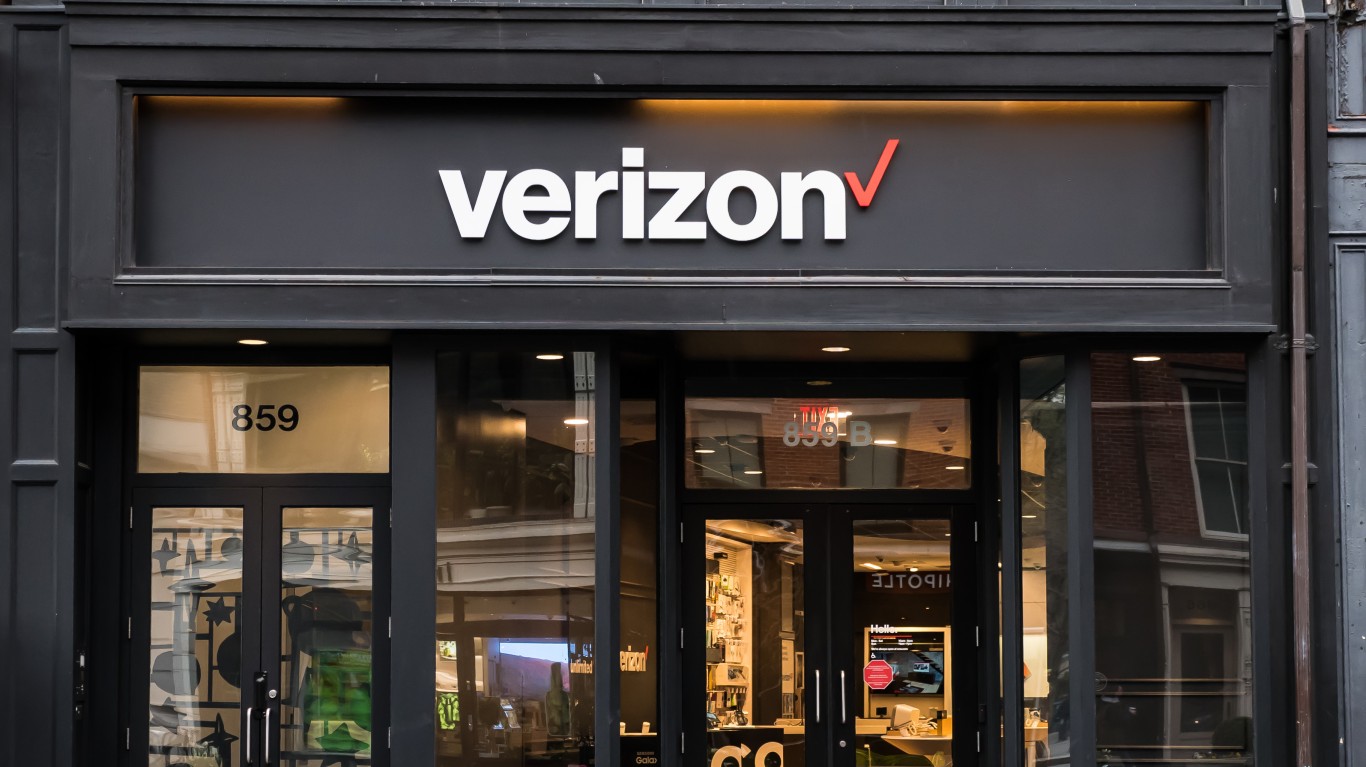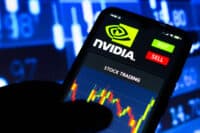
It’s been 100 years since the United States and the world has encountered a pandemic like COVID-19. The Spanish flu, responsible for the 1918 flu pandemic, was unusually deadly. Lasting almost 36 months from January 1918 to December 1920, it infected 500 million people, about a third of the world’s population at the time.
While the medical community doesn’t seem to feel that the current pandemic will produce anything close to the death count of the Spanish flu, the staggering damage done to the world economy will resonate for quite some time. Across Wall Street, there has been much debate over whether we have a V-, U- or W-shaped recovery coming.
[in-text-ad]
Given the extraordinary circumstances, and the velocity of the selling and corporate balance sheet damage, it is almost impossible to predict the outcome with any certainty. The analysts at Raymond James have come up with lists of stocks to buy under all three recovery scenarios. They noted this in the report:
Eventually, economic activity is going to drive a recovery in profits, but because the world has never been through a disruption like this, no one knows with any certainty how fast economic activity will return. For this reason, we believe thinking in terms of scenarios makes the most sense at this point, and note that, historically, “U” shaped recoveries tend to occur where earnings bottom, and stabilize for a while, before returning to pre-recession levels over the course of 3-4 years. The “V” shaped recovery is less and less likely, in our view, given the lack of a proven therapeutic near term, but certainly a potential if a medical cure or virus mutation is found in the coming months. Finally, a “W” shaped recovery would be one in which economies are open and closed periodically over the next 1-2 years as effective therapeutics and vaccines are not discovered, forcing not just a deeper recession, but a longer recession than typical with corporate earnings likely not reaching 2019 levels again until after 2023, and likely locking in what seems like short term consumer behavior today, into a “new normal” for several years.
The Raymond James analysts created three lists of 30 to 35 companies. All stocks on the lists are currently Strong Buy or Outperform rated and have been curated by each analyst for each economic scenario. Then they arranged the lists based on market cap, leverage and sector preferences that would be likely under each scenario.
We screened each of these lists looking for companies that also have had strong insider buying during the recent trading. Here we look at five companies that could excel in a much longer W-type recovery. It’s important to remember that a W-styled recovery would mean some sort of retest of the lows that we hit back in March. So basically, this is the worst-case scenario.
Amedisys
This leading health care stock is a pure-play on an aging nation. Amedisys Inc. (NASDAQ: AMED) provides health care services in the United States. It operates through three segments. The Home Health segment offers a range of services in the homes of individuals for the recovery of patients from surgery, chronic disability or terminal illness, as well as prevents avoidable hospital readmission through its skilled nurses; rehabilitation therapists specialized in physical, speech and occupational therapy; and social workers and aides for assisting its patients.
The Hospice segment offers services that are designed to provide comfort and support for those who are dealing with a terminal illness, including heart disease, pulmonary disease, Alzheimer’s or cancer. The Personal Care segment provides assistance for patients with the activities of daily living. As of February 18, 2020, the company owned and operated 479 care centers in 38 states and the District of Columbia.
Raymond James has set a $225 price target for the shares, while the Wall Street consensus target is $211.46. Amedisys stock closed Wednesday at $189.95.
Baxter International
Another health care play, this is solid stock to own, especially with hospitals and doctors ready to restart non-COVID-related procedures. Baxter International Inc. (NYSE: BAX) provides a portfolio of renal and hospital products. Its Renal segment provides products and services to treat end-stage renal disease, irreversible kidney failure and acute kidney therapies. This segment offers a comprehensive portfolio to meet the needs of patients across the treatment continuum, including technologies and therapies for peritoneal dialysis, in-center hemodialysis (HD), home HD, continuous renal replacement therapy and additional dialysis services.
Baxter’s Hospital Products segment manufactures intravenous (IV) solutions and administration sets, premixed drugs and drug-reconstitution systems, pre-filled vials and syringes for injectable drugs, IV nutrition products, infusion pumps, inhalation anesthetics and biosurgery products. This segment also provides products and services related to pharmacy compounding, drug formulation and packaging technologies.
Shareholders receive a 0.97% dividend. Raymond James has a $97 price target, but the consensus target is $105.25. Baxter stock closed at $91.65 on Wednesday.
[in-text-ad]
Jack Henry
Payment processing is huge in our digital world, and this is a pure-play for investors. Jack Henry & Associates Inc. (NASDAQ: JKHY) engages in the provision of technology solutions and payment processing services primarily for financial services organizations.
The company’s Core segment focuses on core information processing platforms to banks and credit unions, which consist of integrated applications required to process deposit, loan, and general ledger transactions, and to maintain centralized customer or member information.
The Payments segment secures payment processing tools and services, such automated teller machine, debit and credit card processing services; online and mobile bill pay solutions; and risk management products and services.
Shareholders receive a 1.07% dividend. The Raymond James price objective is $181, and the consensus target price is $172. The last Jack Henry trade on Wednesday hit the tape at $161.28.
Johnson & Johnson
With a diverse product base and a very popular and solid brand, this is among the most conservative big pharmaceutical plays. Johnson & Johnson (NYSE: JNJ) is one of the top market cap stocks in the health care sector and will raise the dividend for shareholders this year for the 57th consecutive year.
With everything from medical devices to over-the-counter health items and prescription drugs, Johnson & Johnson remains one of the most diversified health care names on Wall Street. It is also among the top companies helping Americans to fight the COVID-19 pandemic.
The health care giant also has one of the most exciting pipelines of new drugs in the sector. That combined with the solid over-the-counter product business makes the stock an outstanding holding for conservative accounts with a long-term investment outlook. The company generates a little over half of its sales in international markets, which are expected to see higher spending on health care over the next 10 years and beyond.
The dividend recently was raised to $1.01 per share from $0.95, which equals a 2.67% yield. The $157 Raymond James price target compares with the $160.06 consensus target. Johnson & Johnson stock most recently closed trading at $150.24.
Verizon
This top telecommunications company offers tremendous value at current levels and is on two of the three Raymond James recovery lists. Verizon Communications Inc. (NYSE: VZ) is one of the largest U.S. telecom companies. It provides wireless and wireline service to retail, enterprise and wholesale customers.
The company’s wireless network serves approximately 120 million mobile connections with 115 million postpaid subscribers. Verizon’s wireline business has undergone a period of secular decline due to wireless substitution and cable competition. Verizon acquired AOL and Yahoo to create the Oath digital content platform.
Verizon also provides converged communications, information and entertainment services over America’s most advanced fiber-optic network, and it delivers integrated business solutions to customers worldwide. Furthermore, Verizon is one of the most valuable brands in the world.
Verizon stock investors receive an outstanding 4.25% dividend. The Raymond James price objective is $61. The consensus price target is $61.32, and shares ended Wednesday’s trading session at $58.12 apiece.
These five companies could be big winners if the recovery is W-shaped in nature and we return to the March lows. If a W-recovery is indeed forming, it would make sense for investors to be patient and wait for the pullback retracement after the strong rally off the lows. It is important to remember that all their stocks have seen substantial insider buying recently, which is one of the best indicators for stock investors.
Take Charge of Your Retirement In Just A Few Minutes (Sponsor)
Retirement planning doesn’t have to feel overwhelming. The key is finding expert guidance—and SmartAsset’s simple quiz makes it easier than ever for you to connect with a vetted financial advisor.
Here’s how it works:
- Answer a Few Simple Questions. Tell us a bit about your goals and preferences—it only takes a few minutes!
- Get Matched with Vetted Advisors Our smart tool matches you with up to three pre-screened, vetted advisors who serve your area and are held to a fiduciary standard to act in your best interests. Click here to begin
- Choose Your Fit Review their profiles, schedule an introductory call (or meet in person), and select the advisor who feel is right for you.
Why wait? Start building the retirement you’ve always dreamed of. Click here to get started today!
Thank you for reading! Have some feedback for us?
Contact the 24/7 Wall St. editorial team.

 24/7 Wall St.
24/7 Wall St.



